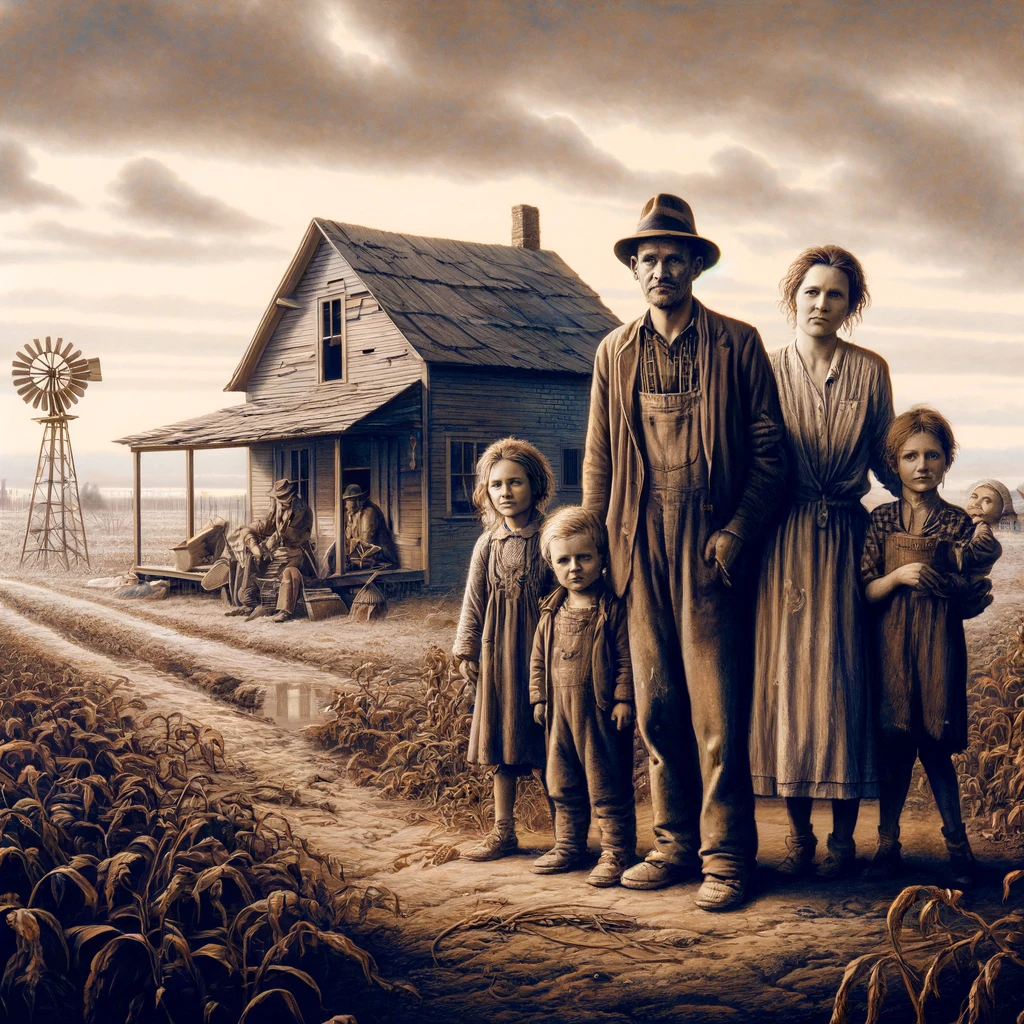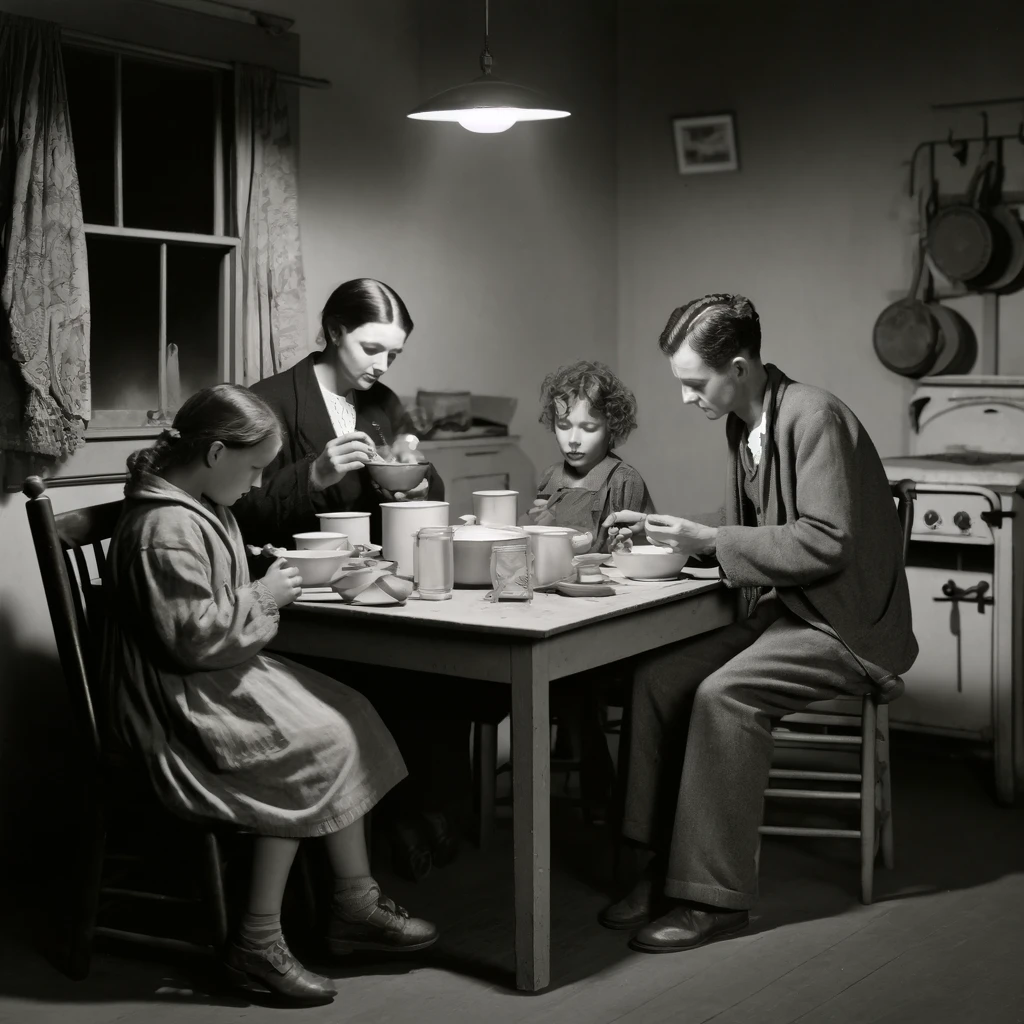
The Great Depression, a period marked by severe economic downturn and hardship, forced families to become incredibly resourceful to survive. Today, amid rising living costs and financial uncertainties, these time-tested strategies from the 1930s can still help us manage our budgets more effectively. Here are ten frugal lessons from the Great Depression era that are surprisingly relevant in today’s economic climate.
1. Embrace Home Cooking and Meal Planning

During the Great Depression, eating out was a luxury few could afford. Families cooked at home, using simple, inexpensive ingredients. Today, meal planning can drastically reduce food waste and cut down grocery bills. Planning meals weekly and using everything you buy can minimize the need for take-out and ready-made meals, which are often more expensive and less healthy.
2. Grow Your Own Food

With little money for groceries, many families during the Depression turned their backyards into vegetable gardens. Starting a home garden today can significantly reduce the amount spent on produce. Even if you live in an apartment, herbs and smaller vegetables can be grown in window boxes or balcony planters, providing fresh ingredients at your fingertips.
3. Use It Up, Wear It Out, Make It Do, or Do Without

A popular saying during the Depression, this mantra encouraged people to maximize the use of all their possessions. Before buying new, consider if it is truly necessary, or if something you own can be repaired or repurposed. Embracing a minimalist approach not only saves money but also reduces clutter and environmental impact.
4. Barter and Trade

Cash was scarce in the 1930s, so trading goods and services was common. Bartering can still be effective today, especially in close-knit communities or online platforms where goods and services can be exchanged without money. Whether it’s swapping home-grown vegetables for a haircut or exchanging skills like tutoring for plumbing work, bartering can bypass the need for cash transactions.
5. Make Savings Automatic

Although banks were viewed with suspicion during the Depression, those who could save, did so by any means necessary. Today, setting up automatic transfers to a savings account can help you build a financial cushion without thinking about it. Even small amounts, over time, can grow into substantial savings, providing security in times of need.
6. Entertain at Home

Entertainment during the Depression often consisted of home-based activities like board games, reading, and musical evenings. In our current era, where entertainment options are often expensive, revisiting these simple pleasures can provide substantial savings. Hosting a game night, movie marathon, or dinner party can be a cost-effective way to socialize and enjoy leisure time.
7. Practice Preventive Healthcare

People during the Depression knew that prevention was better than cure, primarily because medical care was a costly luxury. Today, maintaining your health through regular exercise, a balanced diet, and adequate sleep can prevent numerous health problems and save on medical bills in the long run.
8. Simplify Your Wardrobe

Fashion was not a priority during the Depression, and functional, durable clothing was favored. Simplifying your wardrobe and focusing on quality and versatility reduces the need to constantly buy new outfits. Investing in classic pieces that can be mixed and matched creates a timeless wardrobe that transcends seasonal trends.
9. Utilize Public Resources

Libraries, parks, and other public resources were invaluable during the Depression. These facilities continue to offer free or low-cost services that can enrich your life without straining your budget. From borrowing books and movies to attending workshops and enjoying nature, public resources are an underutilized treasure trove.
10. Community Involvement

Finally, the Depression-era highlighted the strength of community support. Engaging with your community can provide not only emotional support but also practical benefits like shared resources and collective knowledge. Participating in community gardens, local events, and cooperative groups can help stretch your budget further while enriching your social life.
Frugal Lessons From the Great Depression

Incorporating these frugal lessons from the Great Depression into modern life not only helps save money but also promotes a sustainable and community-focused way of living. These strategies prove that sometimes, looking backward can be the best way to move forward financially.

